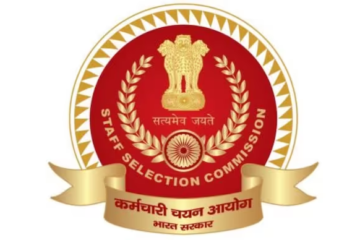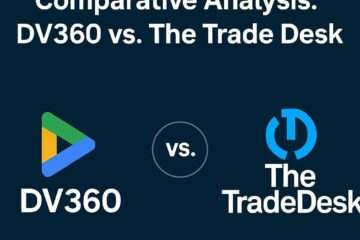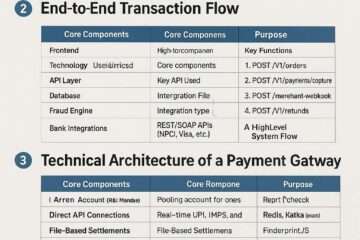

I. Credit Card Operations of Banks
1. Introduction
This circular is aimed at providing general guidance to banks/NBFCs on their credit card operations, and the systems and controls expected of them in managing their credit card business. It also sets out the best practices that they should aim to achieve.
Experience has shown that the quality of banks’ credit card portfolios mirrors the economic environment in which they operate, and there is a strong correlation between an economic downturn and deterioration in the quality of such portfolios. The deterioration may become even more serious if banks have relaxed their credit underwriting criteria and risk management standards as a result of intense competition in the market. It is therefore important for banks to maintain prudent policies and practices for managing the risks of their credit card business which are relevant to the market environment that they operate in.
2. Issue of cards
2.1 Banks in India can undertake credit card business either departmentally or through a subsidiary company set up for the purpose. They can also undertake domestic credit card business by entering into tie-up arrangement with one of the banks already having arrangements for issue of credit cards.
2.2 Prior approval of the Reserve Bank is not necessary for banks desirous of undertaking credit card business either independently or in tie-up arrangement with other card issuing banks. Banks can do so with the approval of their Boards. However, only banks with networth of `100 crore and above should undertake credit card business. Banks desirous of setting up separate subsidiaries for undertaking credit card business would, however, require prior approval of the Reserve Bank.
2.3 Each bank must have a well documented policy and a Fair Practices Code for credit card operations. The Fair Practices Code should incorporate the various guidelines on the subject issued by RBI from time to time, as well as the relevant Guidelines contained in this Master Circular. Banks which have adopted the “Code of Bank’s Commitment to Customers”(Code) of The Banking Codes and Standards Board of India (BCSBI) may also incorporate the principles enunciated therein, as amended from time to time, in their Fair Practices Code. The Fair Practices Code should be available on the website of the Bank/NBFC.
2.4 Banks/NBFCs should ensure prudence while issuing credit cards and independently assess the credit risk while issuing cards to persons, especially to students and others with no independent financial means.
2.5 In terms of the instructions contained in the circular DBOD.No.Leg.BC.65/09.07.005/2006-07 dated March 6, 2007, banks have been advised that in case of all categories of loans irrespective of any threshold limits, including credit card applications, banks should convey in writing the main reason/reasons which in the opinion of the bank have led to the rejection of the loan applications. It is reiterated that banks should convey in writing the main reason/reasons which have led to the rejection of the credit card applications.
2.6 As holding several credit cards enhances the total credit available to any consumer, banks/NBFCs should assess the credit limit for a credit card customer having regard to the limits enjoyed by the cardholder from other banks on the basis of self- declaration/ credit information obtained from a CIC.
2.7 While issuing cards, the terms and conditions for issue and usage of a credit card should be mentioned in clear and simple language (preferably in English, Hindi and the local language) comprehensible to a card user. The Most Important Terms and Conditions (MITCs) termed as standard set of conditions, as given in the Annex, should be highlighted and advertised/sent separately to the prospective customer/customers at all the stages i.e. during marketing, at the time of application, at the acceptance stage (welcome kit) and in important subsequent communications.
2.8 In cases where the banks are offering any insurance cover to their credit card holders, in tie-up with insurance companies, the banks may consider obtaining in writing from the credit card holders the details of nominee/s for the insurance cover in respect of accidental death and disablement benefits. Banks may ensure that the relevant nomination details are recorded by the Insurance Company. Banks may also consider issuing a letter to the credit card holder indicating the details regarding the name, address and telephone number of the Insurance Company which will handle the claims relating to the insurance cover.
3. Types of credit cards
3.1 Banks may issue credit cards including co-branded credit cards, corporate credit cards to the employees of their corporate customers, as well as add-on credit cards.
3.2 However, while issuing co-branded credit cards, banks must undertake due diligence on the non-bank entity to protect themselves against the reputation risk to which they are exposed to in such an arrangement. NBFCs, which desire to enter into a co-branding arrangement for issue of credit cards with banks, may be guided by the instructions contained in circular No. DNBS (PD) CC No.83/03.10.27/2006-07 dated December 04, 2006
3.3 Add-on cards i.e. those that are subsidiary to the principal card, may be issued with the clear understanding that the liability will be that of the principal cardholder. Similarly while issuing corporate credit cards, the responsibilities and liabilities of the corporate and its employees may be clearly specified.
4. Compliance with Know Your Customer (KYC) Norms/Anti-Money Laundering (AML) Standards/Combating of Financing of Terrorism (CFT)/Obligation of Banks under PMLA, 2002
The instructions/guidelines on KYC/AML/CFT applicable to banks, issued by RBI from time to time, may be adhered to in respect of all cards issued, including co-branded, corporate, and add on credit cards.
5. Interest rates and other charges
5.1 Banks are advised to be guided by the instructions on interest rate on advances issued by RBI and as amended from time to time, while determining the interest rate on credit card dues, the latter being in the nature of non-priority sector personal loans. Banks should also prescribe a ceiling rate of interest, including processing and other charges, in respect of credit cards. In case banks/NBFCs charge interest rates which vary based on the payment/default history of the cardholder, there should be transparency in levying of such differential interest rates.
In other words, the fact that higher interest rates are being charged to the cardholder on account of his payment/default history should be made known to the cardholder. For this purpose, the banks should publicise through their website and other means, the interest rates charged to various categories of customers.
Banks/NBFCs should upfront indicate to the credit card holder, the methodology of calculation of finance charges with illustrative examples, particularly in situations where a part of the amount outstanding is only paid by the customer.
5.2 Further, the banks/NBFCs have to adhere to the following guidelines relating to interest rates and other charges on credit cards:
- Card issuers should ensure that there is no delay in dispatching bills and the customer has sufficient number of days (at least one fortnight) for making payment before the interest starts getting charged. In order to obviate frequent complaints of delayed billing, the credit card issuing bank/NBFC may consider providing bills and statements of accounts online, with suitable security measures. Banks/NBFCs could also consider putting in place a mechanism to ensure that the customer’s acknowledgement is obtained for receipt of the monthly statement.
- Card issuers should quote Annualized Percentage Rates (APR) on card products (separately for retail purchase and for cash advance, if different). The method of calculation of APR should be given with a couple of examples for better comprehension. The APR charged and the annual fee should be shown with equal prominence.
- The late payment charges, including the method of calculation of such charges and the number of days, should be prominently indicated. The manner in which the outstanding unpaid amount will be included for calculation of interest should also be specifically shown with prominence in all monthly statements. Even where the minimum amount indicated to keep the card valid has been paid, it should be indicated in bold letters that the interest will be charged on the amount due after the due date of payment. These aspects may be shown in the Welcome Kit in addition to being shown in the monthly statement. A legend/notice to the effect that “Making only the minimum payment every month would result in the repayment stretching over years with consequent interest payment on your outstanding balance” should be prominently displayed in all the monthly statements so as to caution the customers about the pitfalls in paying only the minimum amount due.
- Banks/NBFCs should step up their efforts on educating the cardholders of the implications of paying only ‘the minimum amount due’. The “Most Important Terms and Conditions” should specifically explain that the ‘free credit period’ is lost if any balance of the previous month’s bill is outstanding. For this purpose, banks/NBFCs could work out illustrative examples and include the same in the Welcome Kit sent to the cardholders as also place it on their website.
- Banks are advised to follow uniform method of determining over-due status for credit card accounts while reporting to credit information companies and for the purpose of levying penal charges viz., late payment charges, etc., if any, as issued in terms of our circular DBOD.No.BP.BC.78/21.04.048/2013-14 dated December 20, 2013, as amended from time to time.
- The banks/NBFCs should not levy any charge that was not explicitly indicated to the credit card holder at the time of issue of the card and without getting his/her consent. However, this would not be applicable to charges like service taxes, etc. which may subsequently be levied by the Government or any other statutory authority.
- The terms and conditions for payment of credit card dues, including the minimum payment due, should be stipulated so as to ensure that there is no negative amortization.
- Changes in charges (other than interest) may be made only with prospective effect giving notice of at least one month. If a credit card holder desires to surrender his credit card on account of any change in credit card charges to his disadvantage, he may be permitted to do so without the bank levying any extra charge for such closure. Any request for closure of a credit card has to be honoured immediately by the credit card issuer, subject to full settlement of dues by the cardholder.
- There should be transparency (without any hidden charges) in issuing credit cards free of charge during the first year.
6. Wrongful billing
The card issuing bank/NBFC should ensure that wrong bills are not raised and issued to customers. In case, a customer protests any bill, the bank/ NBFC should provide explanation and, if necessary, documentary evidence may also be provided to the customer within a maximum period of sixty days with a spirit to amicably redress the grievances.
7. Use of Direct Sales Agent (DSAs)/Direct Marketing Agents (DMAs) and other Agents
7.1. When banks/NBFCs outsource the various credit card operations, they have to be extremely careful that the appointment of such service providers does not compromise with the quality of the customer service and the banks’/NBFCs’ ability to manage credit, liquidity and operational risks. In the choice of the service provider, the banks/NBFCs have to be guided by the need to ensure confidentiality of the customer’s records, respect customer privacy, and adhere to fair practices in debt collection.
7.2 In terms of the BCSBI’s Code of Bank’s Commitment to Customers, banks which have subscribed to the Code are required to prescribe a Code of Conduct for their DSAs whose services are engaged by banks for marketing their products/services. Banks should ensure that the DSAs engaged by them for marketing their credit card products scrupulously adhere to the Code of Conduct for Credit Card operations of the banks/NBFCs which should be displayed on the website of individual bank/NBFC and be available easily to any credit card holder.
7.3 The bank/NBFC should have a system of random checks and mystery shopping to ensure that their agents have been properly briefed and trained in order to handle with care and caution their responsibilities, particularly in the aspects included in these guidelines like soliciting customers, hours for calling, privacy of customer information, conveying the correct terms and conditions of the product on offer, etc.
7.4 Banks may ensure that they engage telemarketers who comply with directions/regulations on the subject issued by the Telecom Regulatory Authority of India (TRAI) from time to time while adhering to guidelines issued on “Unsolicited Commercial Communications – National Customer Preference Register (NCPR)”.
8. Issue of unsolicited cards/facilities
8.1 Unsolicited cards should not be issued. In case, an unsolicited card is issued and activated without the written consent of the recipient and the latter is billed for the same, the card issuing bank shall not only reverse the charges forthwith, but also pay a penalty without demur to the recipient amounting to twice the value of the charges reversed.
8.2 In addition, the person in whose name the card is issued can also approach the Banking Ombudsman who would determine the amount of compensation payable by the bank to the recipient of the unsolicited card as per the provisions of the Banking Ombudsman Scheme 2006, i.e., for loss of complainant’s time, expenses incurred, harassment and mental anguish suffered by him.
8.3 There have been instances where unsolicited cards issued have been misused before reaching the person in whose name these have been issued. It is clarified that any loss arising out of misuse of such unsolicited cards will be the responsibility of the card issuing bank/NBFC only and the person in whose name the card has been issued cannot be held responsible for the same.
8.4 The consent for the cards issued or the other products offered along with the card has to be explicit and should not be implied. In other words, the written consent of the applicant would be required before issuing a credit card.
8.5 Unsolicited loans or other credit facilities should not be offered to the credit card customers. In case an unsolicited credit facility is extended without the consent of the recipient and the latter objects to the same, the credit sanctioning bank/NBFC shall not only withdraw the credit limit, but also be liable to pay such penalty as may be considered appropriate.
8.6 The card issuing bank/NBFC should not unilaterally upgrade credit cards and enhance credit limits. Prior consent of the borrower should invariably be taken whenever there are any change/s in terms and conditions.
9. Customer confidentiality
9.1 The card issuing bank/NBFC should not reveal any information relating to customers obtained at the time of opening the account or issuing the credit card to any other person or organization without obtaining their specific consent, as regards the purpose/s for which the information will be used and the organizations with whom the information will be shared. The application form for credit card must explicitly provide for consent the same. Further, in case where the customers gives his consent for the bank sharing the information with other agencies, banks should explicitly state and explain clearly to the customer the full meaning/ implications of the disclosure clause. The information being sought from customers should not be of such nature as will violate the provisions of the laws relating to secrecy in the transactions. Banks/NBFCs would be solely responsible for the correctness or otherwise of the data provided for the purpose.
9.2 The disclosure to the DSAs/recovery agents should also be limited to the extent that will enable them to discharge their duties. Personal information provided by the card holder but not required for recovery purposes should not be released by the card issuing bank/NBFC. The card issuing bank/NBFCs should ensure that the DSAs/DMAs do not transfer or misuse any customer information during marketing of credit card products.
10. Reporting to Credit Information Companies (CICs)
10.1 For providing information relating to credit history/repayment record of the card holder to a Credit Information Company (that has obtained Certificate of Registration from RBI), the bank/NBFC may explicitly bring to the notice of the customer that such information is being provided in terms of the Credit Information Companies (Regulation) Act, 2005.
10.2 Before reporting default status of a credit card holder to a Credit Information Company which has obtained Certificate of Registration from RBI and of which the bank/NBFC is a member, banks/NBFCs should ensure that they adhere to a procedure, duly approved by their Board, including issuing of sufficient notice to such card holder about the intention to report him/ her as defaulter to the Credit Information Company. The procedure should also cover the notice period for such reporting as also the period within which such report will be withdrawn in the event the customer settles his dues after having been reported as defaulter. Banks/NBFCs should be particularly careful in the case of cards where there are pending disputes. The disclosure/release of information, particularly about the default, should be made only after the dispute is settled as far as possible. In all cases, a well laid down procedure should be transparently followed. These procedures should also be transparently made known as part of MITCs.
11. Fair practices in debt collection
11.1 In the matter of recovery of dues, banks should ensure that they, as also their agents, adhere to the extant instructions on Fair Practice Code for lenders (as also BCSBI’s Code of Bank’s Commitment to Customers (those banks which have subscribed to the BCSBI Code). In case banks have their own code for collection of dues, they should, at the minimum, incorporate all the terms of BCSBI’s Code referred above.
11.2 In particular, in regard to appointment of third party agencies for debt collection, it is essential that such agents refrain from action that could damage the integrity and reputation of the bank/NBFC and that they observe strict customer confidentiality. All letters issued by recovery agents must contain the name and address of a responsible senior officer of the card issuing bank whom the customer can contact at his location.
11.3 Banks/NBFCs/their agents should not resort to intimidation or harassment of any kind, either verbal or physical, against any person in their debt collection efforts, including acts intended to humiliate publicly or intrude the privacy of the credit card holders’ family members, referees and friends, making threatening and anonymous calls or making false and misleading representations.
11.4 The banks should also ensure to comply with the extant guidelines in respect of engagement of recovery agents issued by RBI, as amended from time to time.
12. Redressal of grievances
12.1 Generally, a time limit of 60 (sixty) days may be given to the customers for referring their complaints/grievances.
12.2 The card issuing bank/NBFC should constitute Grievance Redressal machinery within the bank/NBFC and give wide publicity about it through electronic and print media. The name and contact number of designated grievance redressal officer of the bank/NBFC should be mentioned on the credit card bills. The designated officer should ensure that genuine grievances of credit card subscribers are redressed promptly without involving delay.
12.3 Banks/NBFCs should ensure that their call centre staff is trained adequately to competently handle all customer complaints.
12.4 Banks/NBFCs should also have a mechanism to escalate automatically unresolved complaints from a call center to higher authorities and the details of such mechanism should be put in public domain through their website.
12.5 The grievance redressal procedure of the bank/NBFC and the time frame fixed for responding to the complaints should be placed on the bank’s website. The name, designation, address and contact number of important executives as well as the Grievance Redressal Officer of the bank/NBFC may be displayed on the website. There should be a system of acknowledging customers’ complaints for follow up, such as complaint number/docket number, even if the complaints are received on phone.
12.6 If a complainant does not get satisfactory response from the bank/NBFC which is a subsidiary of a bank within a maximum period of thirty (30) days from the date of his lodging the complaint, he will have the option to approach the Office of the concerned Banking Ombudsman for redressal of his grievance/s. The bank/NBFC, which is a subsidiary of a bank, shall be liable to compensate the complainant for the loss of his time, expenses, financial loss as well as for the harassment and mental anguish suffered by him for the fault of the bank and where the grievance has not been redressed in time.
13. Internal control and monitoring systems
With a view to ensuring that the quality of customer service is ensured on an on-going basis in banks/NBFCs, the Standing Committee on Customer Service in each bank/NBFC should review the credit card operations including reports of defaulters to a Credit Information Company which has obtained Certificate of Registration from RBI and of which the bank/NBFC is a member and credit card related complaints on a monthly basis and take measures to improve the services and ensure the orderly growth in the credit card operations. Banks should put up detailed quarterly analysis of credit card related complaints to their Top Management. Card issuing banks should have in place a suitable monitoring mechanism to randomly check the genuineness of merchant transactions. Banks should prepare and place before their Boards/Management Committee a comprehensive Review Report on credit card business on half-yearly basis as at the end of September and March of each accounting year, which should cover essential data on credit card business, such as category and number of cards issued and outstanding, number of active cards, average turnover per card, number of establishments covered, average time taken for recovery of dues from the card holders, debts classified as NPAs and provisions held there-against or amounts written off, details of frauds on credit cards, steps taken to recover the dues, profitability analysis of the business, etc.
14. Fraud control – security and other measures
14.1 Banks/NBFCs should set up internal control systems to combat frauds and actively participate in fraud prevention committees/ task forces which formulate laws to prevent frauds and take proactive fraud control and enforcement measures.
14.2 With a view to reducing the instances of misuse of lost/stolen cards, it is recommended to banks/NBFCs that they may consider issuing (i) cards with photographs of the cardholder; (ii) cards with PIN; and (iii) signature laminated cards or any other advanced methods that may evolve from time to time.
14.3 Banks may ensure that they put in place the various security and risk mitigation measures for usage of cards and electronic payment transactions, issued by Department of Payment and Settlement Systems, Reserve Bank of India from time to time.
14.4 Banks are advised to block a lost card immediately on being informed by the customer and formalities, if any, including lodging of FIR can follow within a reasonable period.
14.5 Banks may consider introducing, at the option of the customers, an insurance cover to take care of the liabilities arising out of lost cards. In other words, only those cardholders who are ready to bear the cost of the premium should be provided an appropriate insurance cover in respect of lost cards.
15. Right to impose penalty
Reserve Bank of India reserves the right to impose any penalty on a bank/NBFC under the provisions of the Banking Regulation Act, 1949/the Reserve Bank of India Act, 1934, respectively for violation of any of these guidelines.



























































